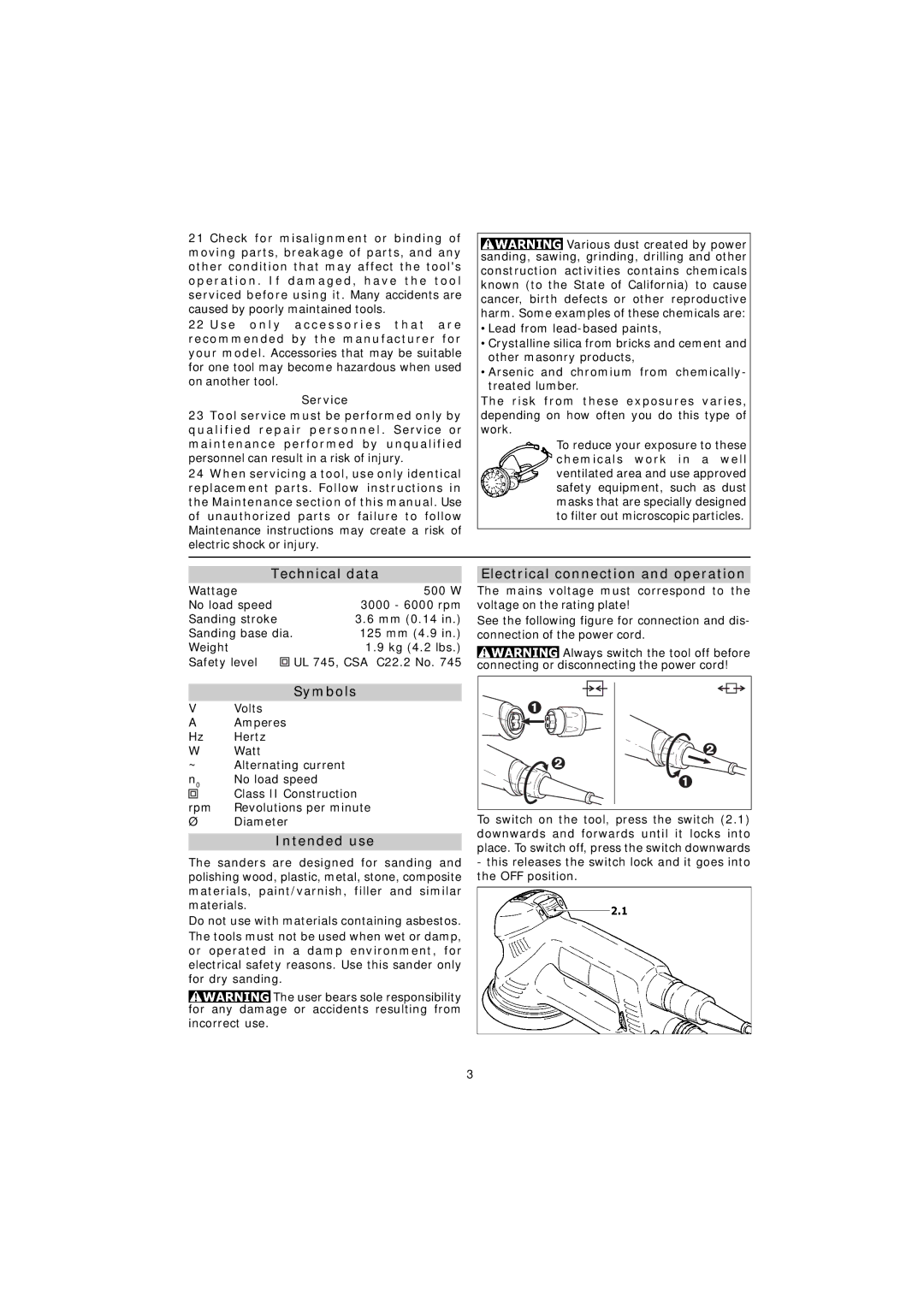
21 Check for misalignment or binding of moving parts, breakage of parts, and any other condition that may affect the tool's operation. If damaged, have the tool serviced before using it. Many accidents are caused by poorly maintained tools.
22 Use only accessories that are recommended by the manufacturer for your model. Accessories that may be suitable for one tool may become hazardous when used on another tool.
Service
23Tool service must be performed only by qualified repair personnel. Service or maintenance performed by unqualified personnel can result in a risk of injury.
24When servicing a tool, use only identical replacement parts. Follow instructions in the Maintenance section of this manual. Use of unauthorized parts or failure to follow Maintenance instructions may create a risk of electric shock or injury.
![]() Various dust created by power sanding, sawing, grinding, drilling and other construction activities contains chemicals known (to the State of California) to cause cancer, birth defects or other reproductive harm. Some examples of these chemicals are:
Various dust created by power sanding, sawing, grinding, drilling and other construction activities contains chemicals known (to the State of California) to cause cancer, birth defects or other reproductive harm. Some examples of these chemicals are:
•Lead from
•Crystalline silica from bricks and cement and other masonry products,
•Arsenic and chromium from chemically- treated lumber.
The risk from these exposures varies, depending on how often you do this type of work.
To reduce your exposure to these chemicals work in a well ventilated area and use approved safety equipment, such as dust masks that are specially designed to filter out microscopic particles.
Technical data
Wattage |
| 500 W |
No load speed |
| 3000 - 6000 rpm |
Sanding stroke |
| 3.6 mm (0.14 in.) |
Sanding base dia. | 125 mm (4.9 in.) | |
Weight |
| 1.9 kg (4.2 lbs.) |
Safety level | UL 745, CSA C22.2 No. 745 | |
Electrical connection and operation
The mains voltage must correspond to the voltage on the rating plate!
See the following figure for connection and dis- connection of the power cord.
![]() Always switch the tool off before connecting or disconnecting the power cord!
Always switch the tool off before connecting or disconnecting the power cord!
Symbols
V | Volts |
A | Amperes |
Hz | Hertz |
W | Watt |
~Alternating current
n0 | No load speed |
| Class II Construction |
rpm | Revolutions per minute |
ØDiameter
Intended use
The sanders are designed for sanding and polishing wood, plastic, metal, stone, composite materials, paint/varnish, filler and similar materials.
Do not use with materials containing asbestos.
The tools must not be used when wet or damp, or operated in a damp environment, for electrical safety reasons. Use this sander only for dry sanding.
![]() The user bears sole responsibility for any damage or accidents resulting from incorrect use.
The user bears sole responsibility for any damage or accidents resulting from incorrect use.
To switch on the tool, press the switch (2.1) downwards and forwards until it locks into place. To switch off, press the switch downwards
-this releases the switch lock and it goes into the OFF position.
3
